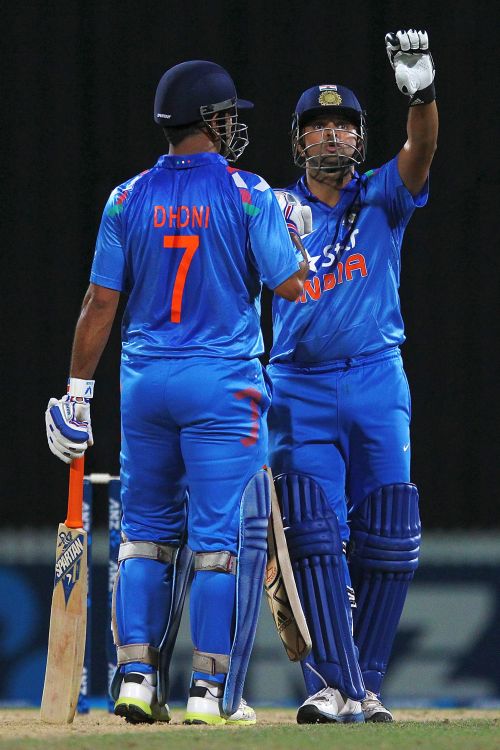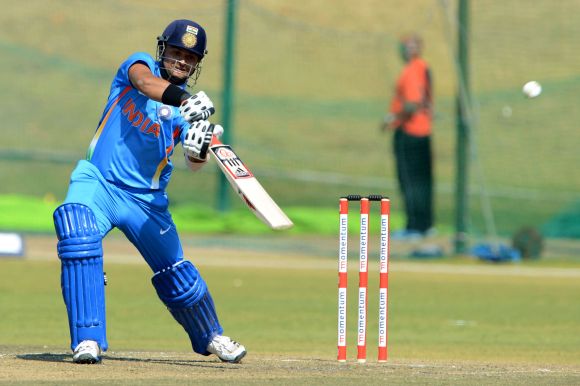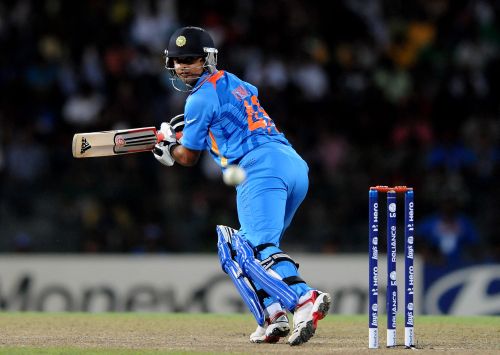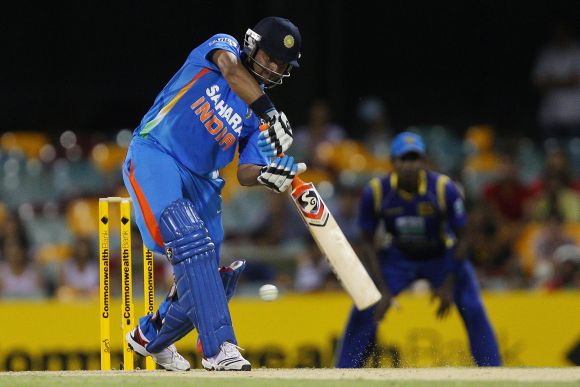
With pressure mounting to win the third ODI, skipper Mahendra Singh Dhoni has asked experienced Suresh Raina to step up and perform.
In the Hamilton match India's hopes had diminished when Virat Kohli got out in the 30th over of the innings but the presence of Dhoni and Raina at the crease was still a cause for concern to the Kiwis.
And surprisingly, it was an out-of-sorts Raina who was the chief aggressor in that partnership. He scored 35 runs off 22 balls, with only six fours.
It was similar to many run-chases the two batsmen have been involved in for their IPL franchise, Chennai Super Kings.
For a short time, Indian hopes were up again, only to be dashed when Raina holed out. The frustration on Dhoni’s face told quite a tale.
"Raina is someone who plays aggressive cricket but it is important to have control over your mind as to what are the areas you want to hit. If it is not there to be hit, what are the other options you have got?," said Dhoni, talking about Raina's batting.
"It is not like you want to try and hit something and even if is not there to be hit, you still go for a big shot."

There was nothing extra-ordinary about Raina’s innings, except that it was his second highest score since the 2013-14 season started for the Men in Blue with the seven-match ODI series at home against Australia.
He has had a poor run these three months against West Indies and South Africa thereafter – 39, DNB, 17, DNB, 16, 28, 0, 23, 34, 14, 36, DNB, and now in New Zealand 18 and 35.
On Wednesday evening at Seddon Park, however, coming in at number six, Raina was faced with a do-or-die situation. He did not have time to settle down and think about countering the short stuff aimed at him, in order to preserve his wicket.
The need of the hour was scoring runs and he looked to do so, hitting some aggressive pull-shots and earning three of his six boundaries in such fashion. Not having to worry about playing for time, he almost looked a different batsman, at least in comparison to the last twelve months.
"That (picking bad deliveries to hit) was something he did particularly well in this innings. Hopefully he will gather plenty of confidence after this innings and carry on longer in this manner," said the Indian skipper.

During the home season, the Indian top-order was in red-hot form, chasing down 300-plus totals all by themselves and as such many opportunities were not presented to Raina.
But when the chance did come, he didn’t make it count. For example, he was promoted to bat at number four versus the Aussies, in order to prepare him for a possible central role in the batting order during the 2015 World Cup.
In the very first match at Pune batting at that position, he got a start -- 39 runs -- and then threw it away, playing a needless shot to get a boundary and ended up getting caught.
This tempering bit, about his stroke-making, is something that doesn't come naturally to Raina. Perhaps it is best reflected from the fact that he bats at number three for Chennai Super Kings, a vital position in any format of the game and more so in Twenty20.
Add to it, the small fact that he has never missed a game for his franchise (even Dhoni has sat out a few), and the summation is that Raina is indeed a batsman who is always on-the-go in the limited-overs format.

When he was sent up to bat at number four (or number five) in the recent months, Raina tried controlling his natural instincts and setting himself up for big runs. But the more time he spent at the crease, the more vulnerable he became against short bowling.
It is no secret in international cricket that he has an acute weakness against anything aimed at his chest or head. In a bid to cut out his shots, he failed to express himself enough against such aggressive bowling and thus ended up losing his wicket sooner rather than later.
Twice, Mitchell Johnson worked him over in this fashion during the ODIs in October. Then, it happened again in the first ODI at Napier.
The worst part is that it flows onto his mindset against slower bowlers as well. Since his run-scoring is cut off with deliveries angled into his body, he tries to charge the spinners and it doesn't pay off always.